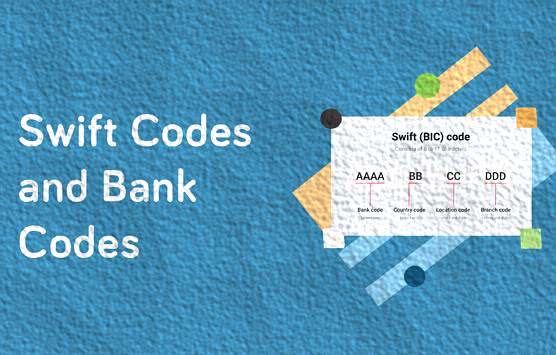When it comes to international money transfers, it’s essential to have a clear understanding of IBAN, SWIFT, and BIC codes. These codes and numbers play an important role in identifying banks and account holders and ensuring that your money transfer reaches the correct recipient. In this article, we’ll explore the differences between these codes and why they are important for international money transfers, including examples of each.
- IBAN (International Bank Account Number): The IBAN is a unique identifier for a bank account. It consists of a series of alphanumeric characters and is used to identify a bank account in the international banking system. An IBAN is typically made up of the country code, a two-letter country-specific code, and the individual bank account number. For example, a German IBAN may look like this: DE89370400440532013000.
- SWIFT (Society for Worldwide Interbank Financial Telecommunication): The SWIFT code is a unique identifier for a financial institution. It is used to identify the bank in international transactions and to route the transfer of money between banks. A SWIFT code consists of 8 or 11 characters, including letters and numbers. For example, the SWIFT code for the Bank of America may be BOFAUS3N.
- BIC (Bank Identifier Code): The BIC code is a unique identifier for a bank. It is used to identify a bank in international transactions and is often used interchangeably with the SWIFT code. A BIC code consists of 8 or 11 characters, including letters and numbers. For example, the BIC code for HSBC Bank in London may be MIDLGB22.
It’s important to note that IBAN, SWIFT, and BIC codes are not the same thing. The IBAN is used to identify a bank account, the SWIFT code is used to identify a financial institution, and the BIC code is used to identify a bank. These codes play different roles in the international money transfer process, but they all work together to ensure that the transfer is completed accurately and efficiently.
In conclusion, understanding the differences between IBAN, SWIFT, and BIC codes is crucial for successful international money transfers. Whether you’re making a personal transfer or a business transaction, it’s important to have the correct codes and information for the recipient’s bank and account. If you need additional help or have questions about these codes, your bank will be able to assist you.
IBAN Search Terms
| iban |
| barclays bank |
| ibanking dbs |
| iban rechner |
| iban checker |
| iban calculator |
| verifica iban |
| iban number |
| ibanez guitars |
| iban nummer |
| calcular iban |
| iban generator |
| iban validator |
| iban code |
| iban meaning |
| iban ing |
| iban australia |
| iban number commonwealth bank |
| iban westpac |
| australia iban example |
| how to find iban number |
| swift code and iban number |

Good post! Thank you for sharing this.
Also, check out these articles if you’re interested to get insights on professional courses like
These are some of the booming career options in the present times and are always in demand.